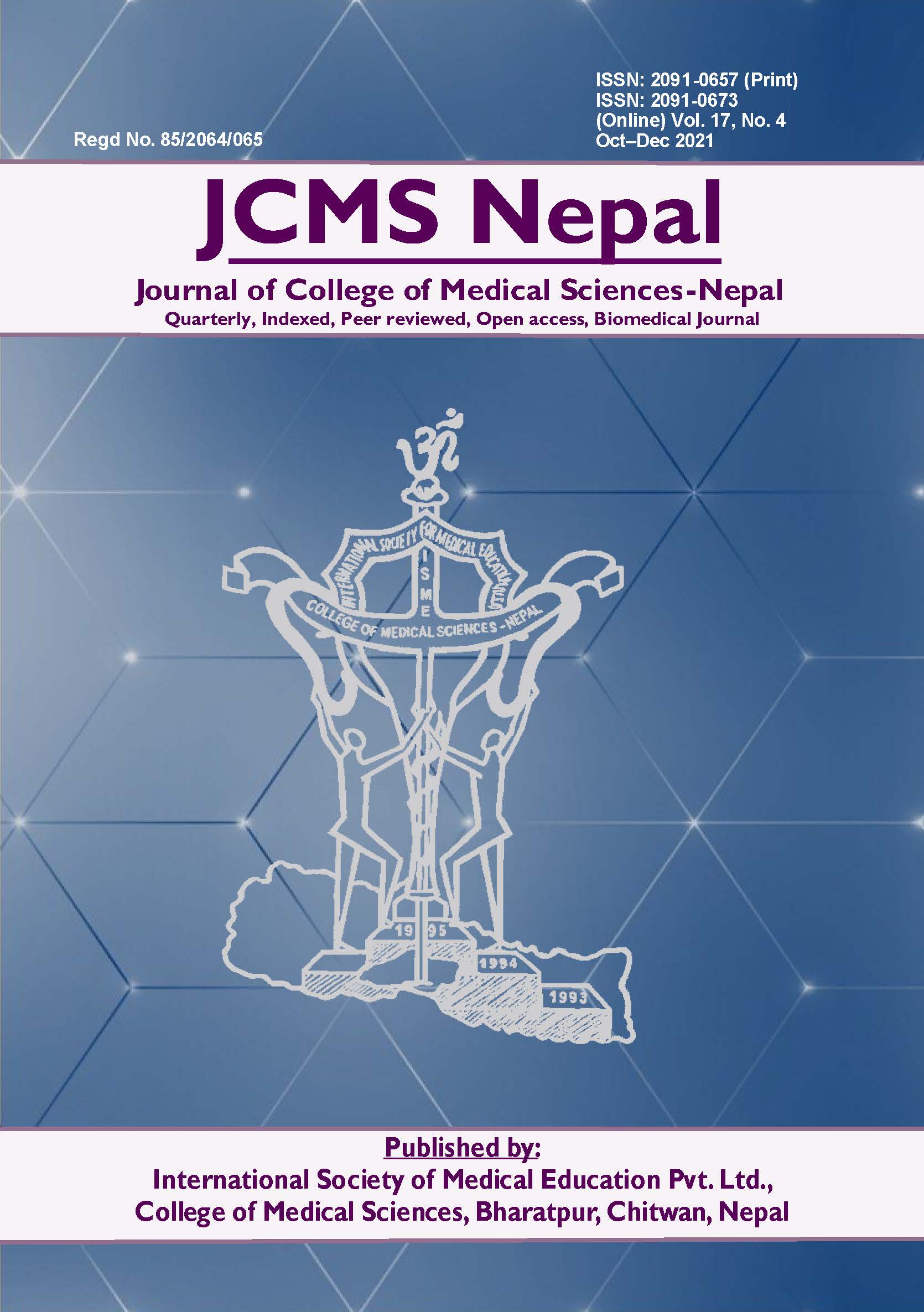Clinical Profile and Outcomes of Patients Undergoing Percutaneous Coronary Intervention: A 5 Year Experience
DOI:
https://doi.org/10.3126/jcmsn.v17i4.40838Keywords:
Ischemic Heart Disease, Percutaneous Coronary Intervention, Risk Factors, OutcomeAbstract
Introduction: Ischemic Heart Disease is the leading cause of mortality and morbidity in the world. Among the ACS, the mortality rate is highest for ST Elevation Myocardial Infarction. Primary Percutaneous Coronary Intervention has emerged as the therapy of choice with better outcomes. In this study we have studied the profile and outcomes of patients with coronary artery diseases in our part of world.
Methods: A retrospective, cross-sectional study was done in the department of medicine (cardiology unit) of Manipal Teaching Hospital, Pokhara. All the cases undergone PCI were taken and analyzed accordingly for the clinical profile and outcomes within the hospital stay from April 2015 to March 2020 (5 years). The data was collected in a preformed proforma and was entered in excel sheet and analyzed using SPSS software version 21. Various statistical tools were used accordingly and p values were considered significant at a predetermined alpha level of 5%.
Results: The total number of procedures done for coronary arteries in Cath lab for 5 years were 2602 of which 2014 were angiographies and 588 were percutaneous coronary interventions/ angioplasties. The male-female ratio was 2.01. Out of 588 angioplasties, 326 were primary. Fifty-five percent of patients undergone angioplasties were age more than 65. Twelve percent of patients with acute coronary syndromes were young (less than 40 years of age). Smoking was the commonest risk factor (71%) followed by hypertension (52%), Dyslipidemia (50%) and Diabetes (18%). Anterior wall myocardial infarction involving left anterior descending artery was the commonest presentation. Right radial artery was the preferred route for procedure (69%) followed by right femoral artery (22%). Fourteen patients (2.3% of total, 5.0% in Primary) died. Most of the deaths were patients having anterior wall STEMI involving LAD with high TIMI scores (>6) (P: 0.0003).
Conclusions: Ischemic heart disease is the commonest cause of mortality worldwide. In our study population, there was male preponderance. ST Elevated MI was the most common presentation of acute coronary syndrome and almost 85% cases posted for primary angioplasty. LAD was the most common artery causing IHD and also was significantly associated with high TIMI score and mortality. ACS in young is alarmingly increasing in this part of world probably associated with increased rates of smoking in younger population.
Downloads
Downloads
Published
How to Cite
Issue
Section
License
Copyright (c) 2021 Navaraj Paudel

This work is licensed under a Creative Commons Attribution-NonCommercial-NoDerivatives 4.0 International License.
This license enables reusers to copy and distribute the material in any medium or format in unadapted form only, for noncommercial purposes only, and only so long as attribution is given to the creator.




